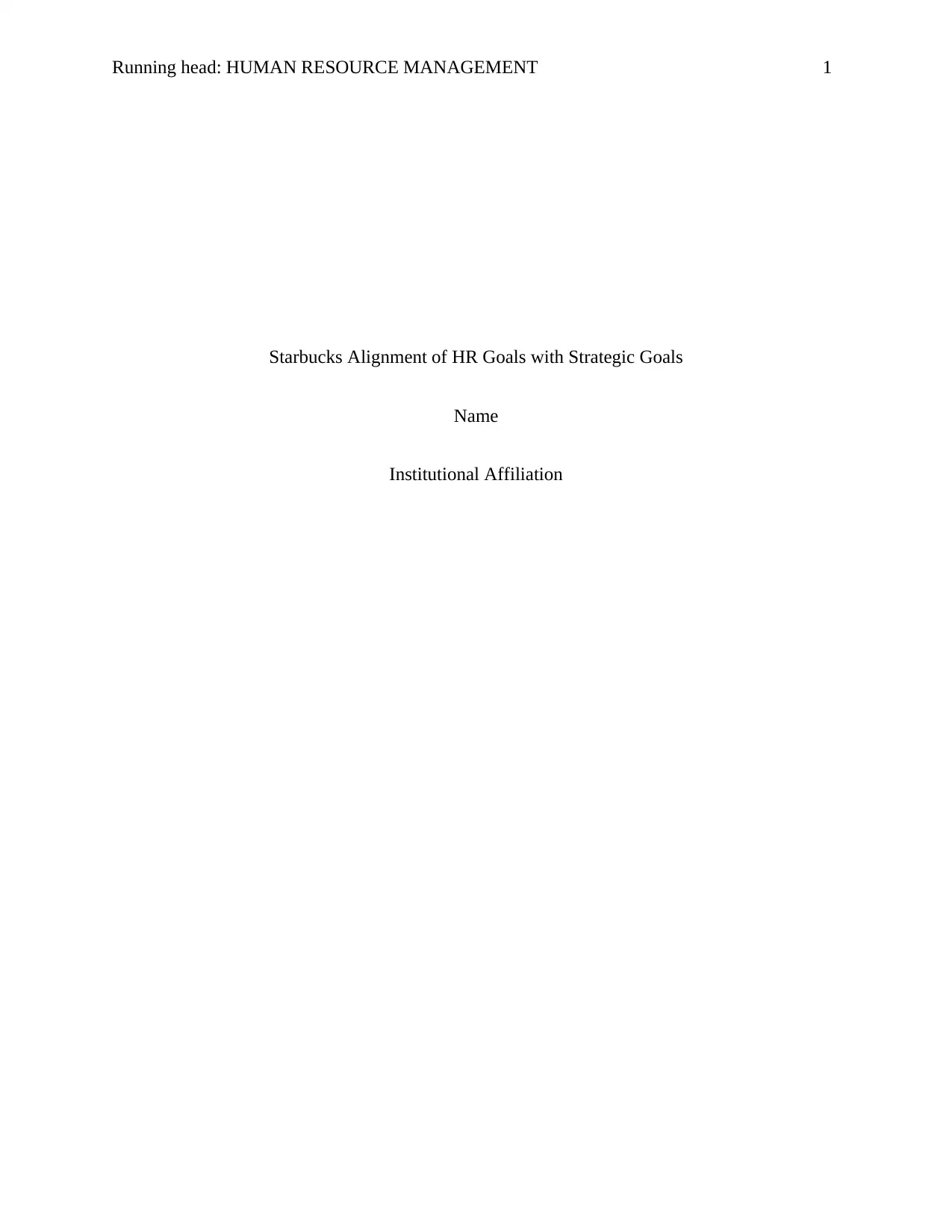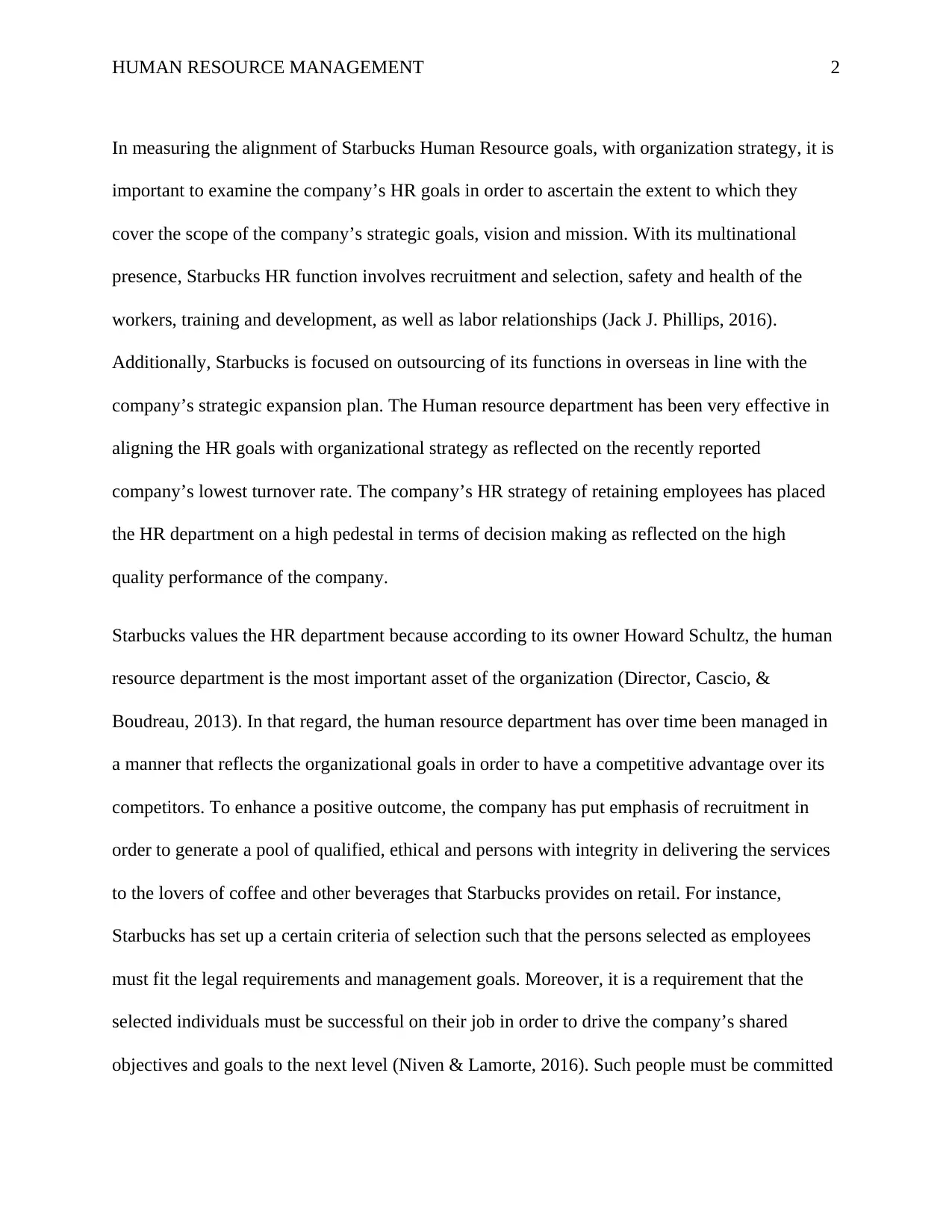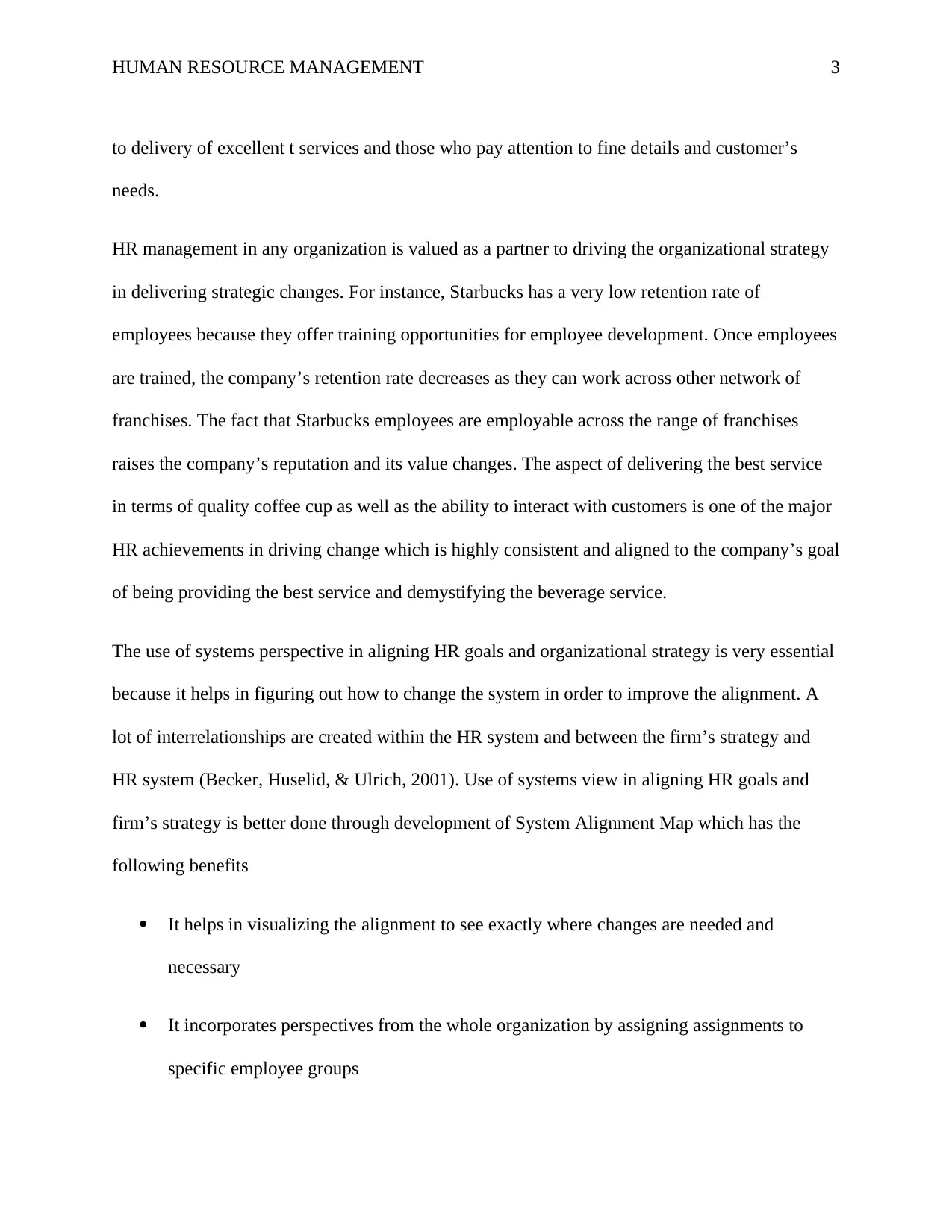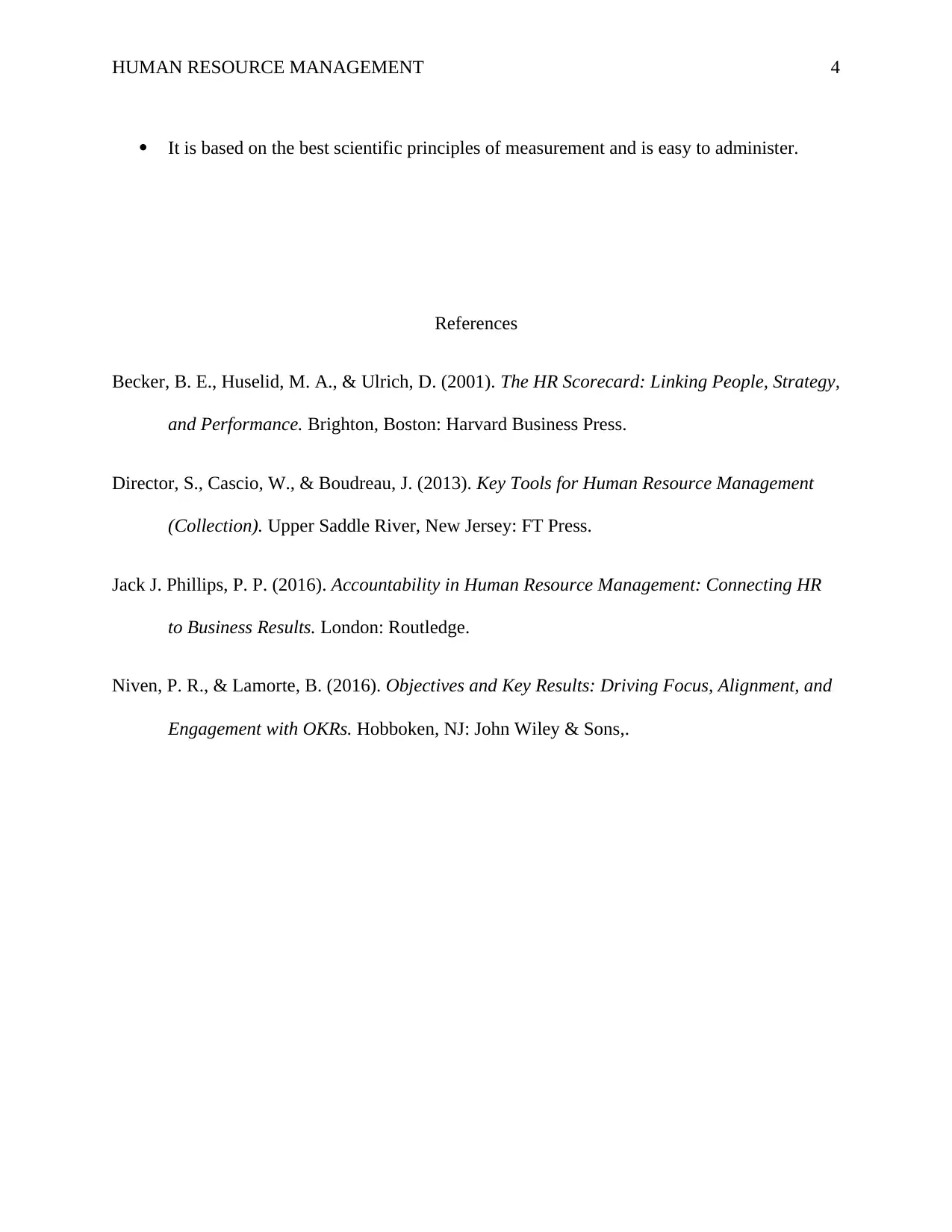Analysis of Starbucks' HR Goals Alignment with Strategic Objectives
VerifiedAdded on 2020/04/21
|4
|811
|713
Report
AI Summary
This report examines the alignment of Starbucks' Human Resource goals with its overall organizational strategy. It explores how Starbucks' HR department, encompassing recruitment, training, and employee relations, supports the company's vision and mission. The report highlights the importance Starbucks places on its HR department, particularly in retaining employees and fostering a high-performance culture. The analysis emphasizes the role of HR in achieving a competitive advantage, focusing on the alignment of HR practices with strategic objectives, such as the company's expansion plans. The report further discusses the use of a systems perspective in aligning HR goals and organizational strategy, including the development of a System Alignment Map to visualize and improve alignment. The report highlights the importance of quality service and employee interactions with customers as a key HR achievement consistent with the company's goal of providing the best service.
1 out of 4











![[object Object]](/_next/static/media/star-bottom.7253800d.svg)